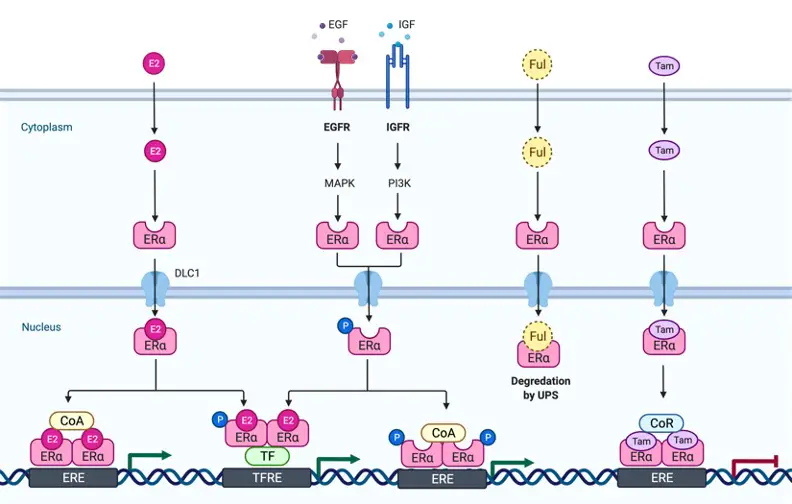Table of Contents
Estrogen Definition
Estrogen is a sex steroid hormone produced in large amounts in females’ ovaries; when bound to oestrogen receptors, it becomes active and produces effects in females that are necessary for the development and maintenance of secondary female sexual characteristics, as well as the regulation of changes in the female reproductive cycle and pregnancy maintenance.
What is Estrogen?
Estrogen is one of the most common types of sex steroids (also known as sex hormones) found in vertebrates, including humans. Certain insects can also produce it naturally. Androgens and progestogens are two more types of sex steroids. Estrogens are commonly thought of as female sex hormones. Because oestrogens are involved in the development and maintenance of secondary female sexual traits in females during puberty, this is the case.

Estrogen is a general name for steroid chemicals that cause estrus. Because it is responsible for the formation and maintenance of female secondary sex characteristics, it is also known as female sex hormones. It also affects the female genitalia, creating a milieu conducive to conception, implantation, and early embryo feeding.
As a result, it is critical for females during their menstrual cycle. It’s also important for keeping a pregnant woman healthy. It has an anabolic impact on protein metabolism and water retention, in addition to reproductive activities.
Males generate oestrogen as well (perhaps in the adrenal cortex and testes), but in very small levels. It is generated in significant quantities in females beginning around puberty. During pregnancy, it is mostly generated in the ovaries and the fetoplacental unit. The ovaries are stimulated to generate oestrogens by the follicle-stimulating hormone (FSH).
Estrogen biosynthesis occurs when cholesterol is converted into oestrogens as the end result of a series of enzymatic steroidogenesis processes. In females, the process begins in the ovaries’ theca interna cells. Cholesterol undergoes a series of processes that result in the synthesis of andostenedione.
The andostenedione then passes through the basal membrane and enters the granulosa cells, where it is transformed to oestrogen (specifically, estrone and estradiol) or testosterone. Aromatase, an enzyme found in granulosa cells that catalyses the conversion of testosterone to estradiol, can be used to convert testosterone to estradiol in a subsequent enzymatic step.
The liver, pancreas, skin, bone, brain, adrenal glands, adipose tissues, and breasts are among the other tissues that generate oestrogen. Estrone (E1), estradiol (E2), estriol (E3), and estetrol (E4) are the four main oestrogens. In humans, the amount of oestrogens in the circulation is lower than that of androgens.
The circulating oestrogens, like the other steroid hormones, are linked to albumin and/or sex hormone-binding globulin. They have the ability to pass through the target cell’s membrane. They then lose the ability to connect with oestrogen receptors on the nucleus, allowing them to control the production of certain genes.
As a medicine, synthetic oestrogens are utilized. They are used in oral contraceptives and as a palliative for breast cancer after menopause and prostate cancer. Other applications include alleviation of menopausal symptoms, breastfeeding suppression, osteoporosis therapy, threatening abortion, and different functional ovarian problems.







